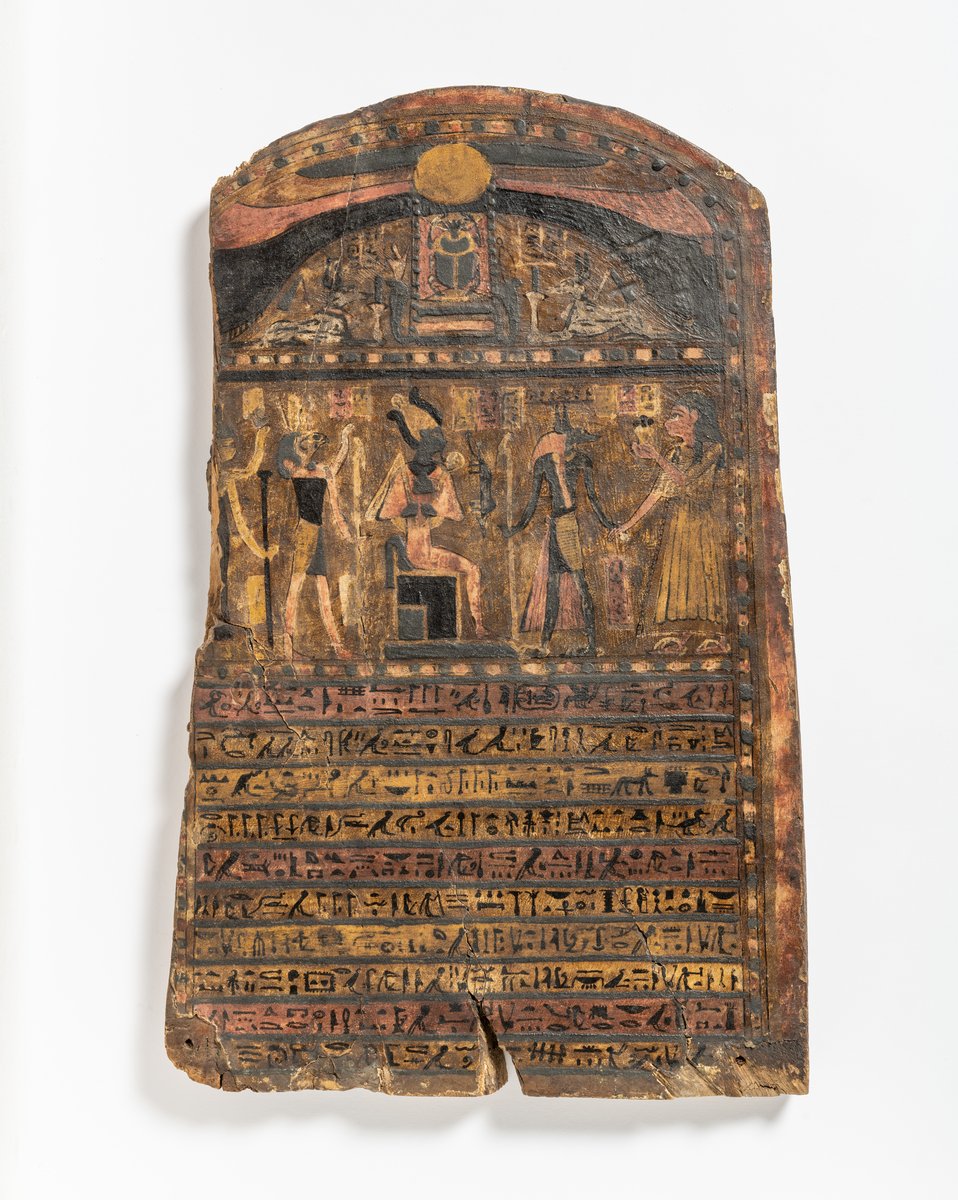
Funerary Stela
Egyptian Art
| Place of production | Egypt |
|---|---|
| Date | early Middle Kingdom, 11th–12th Dynasty |
| Object type | tomb equipment |
| Medium, technique | Wood, gessoed, painted |
| Dimensions | 15.8 × 3.4 × 2 cm |
| Inventory number | 57.9-E |
| Collection | Egyptian Art |
| On view | Museum of Fine Arts, Basement Floor, Ancient Egypt, Daily life |
This painted wooden male figure is an ancient Egyptian servant statue, a fine example of a particular type of funerary equipment characteristic of elite burials from the late Old Kingdom to the early Middle Kingdom. Be they stand-alone or group figures, quite often placed inside small wooden models of granaries and workshops of various kinds, the servant statuettes depicted a range of activities and supplemented the repertoire of scenes of daily life on the walls of funerary chapels. The present piece is incomplete and rather worn; his chest, back, and waist area are heavily damaged. His body was painted brick red as usual, and his knee-length apron is white. The black colouring of the hair is most salient on the back of his head; the outlines of the white-painted eyes and the iris were also indicated in black. His striding posture and a tap hole visible on the slightly flat top of his head suggest that the figure depicts an offering bearer walking and carrying his load on the head, steadied by one of his now-lost arms, once pegged to the torso. Offering bearers have a long tradition in ancient Egyptian iconography, going back to as early as burials of the Pre-Dynastic Period. The wide range of goods they appear to bring (meals, drinks, and crops of various kinds, ritual equipment, other necessities) served to ensure a continued supply for the tomb owner in the afterlife. Female figures were much more common among the offering bearers than males. The former may have occurred as single pieces or in pairs, the latter are better known from processional scenes: in that case, the striding figures were fixed to a common, elongated wooden base, one behind the other, as if they were advancing with their loads in a row towards the tomb. Arguably, the finest examples of the type were found in the tombs of Meketre in Thebes and Djehutynakht in Deir el-Bersha, both dating to the early Middle Kingdom. The Budapest statuette of a male offering bearer may have come from a similar context.
This record is subject to revision due to ongoing research.